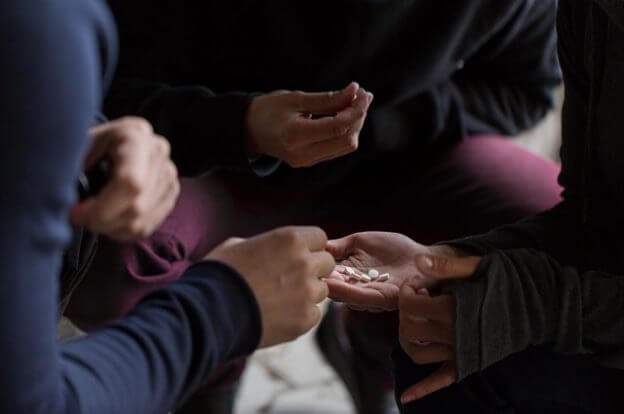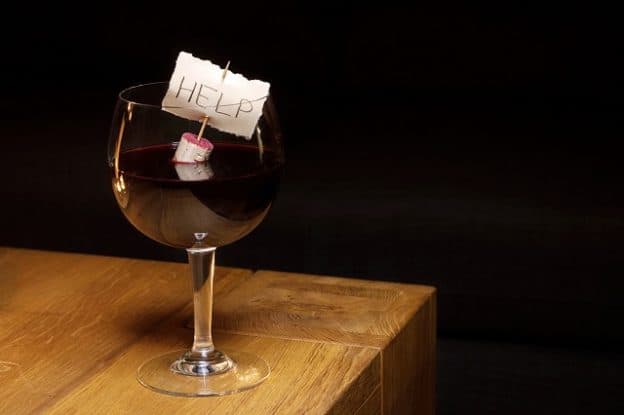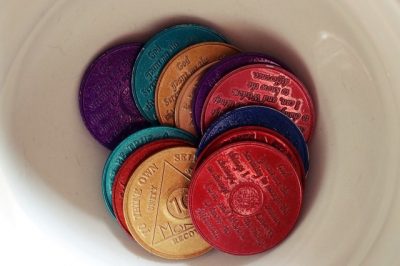Finding out that your teen has begun to experiment with drugs can be a scary reality. Many times parents we have worked with already had a sneaking suspicion, but often the discovery leads to more questions than answers. If you live in Arizona, hopefully we can answer a few of those questions about middle school, high school, and teen substance abuse in Arizona for you today. Note: if you’re not sure, check this resource about warning signs of teen drug use for some helpful tips to determine whether you should be concerned or not.
Whether you are a professional who works with teens and young people, a parent looking to determine information pertaining to the potential risks your loved ones face, or a concerned citizen, we would like to present the teen drug abuse statistical data available to us in as straightforward a manner as possible. The data below has been compiled from the 2018 Arizona Youth Survey, which covers topics ranging from risk factors such as dangerous behaviors and teen drug use to environmental factors such as gang involvement and family attitudes. For the purpose of this article we will focus solely on drug use among Arizona teens statistics.
What is the Arizona Youth Survey (AYS)?
The AYS is an anonymous survey given every two years to youth all across the state of Arizona in middle schools and high schools that decide to participate. The report is reported on state-wide, as well as broken down by county. Due to the anonymity involved in the testing tool (see the tool used in the survey), students are far more likely to tell the truth than in other settings. We believe this is the most reliable glimpse into the reality of drug, alcohol, and tobacco / vape use among teens and youth in the state of Arizona. The teen drug abuse statistical information is also particularly helpful in monitoring the future of prevention efforts in our state.
This teen substance abuse statistical information is, of course, specific to Arizona, but we find it mirrors what we see in other parts of the United States. For instance, here’s a resource on statistical information about teen drug use in California.
Will there be a 2020 AYS?
The AZCJC reports that “Due to school closures in response to the coronavirus (COVID-19) pandemic, the 2020 Arizona Youth Survey (AYS) has been postponed until Fall 2020.” We eagerly await the results of this newest installment of the AYS, and we will update this post accordingly once the results come out.
What grade levels take the Arizona Youth Survey?
The Arizona Youth Survey is taken by 8th graders, 10th graders, and 12th graders throughout Arizona. This allows for an accurate picture of age of onset and progression of use as teens get older.
Key Statistics: Why do Arizona teens use drugs?
One of the most common questions we get revolves around the motivation for substance abuse, especially for first time drug use. When we meet parents they are often bewildered that their kids have made the decision to turn to drugs. While it is natural to start questioning our parenting skills, as well as wondering if our kids have other mental health problems, we find that the real reasons kids use drugs are often extremely simple. Here at Pathway, we have an expression – we lovingly call teenagers “fun machines”. This is because so much of what they do has such a pure and simple motivation: to have as much fun as possible, today. The other commonly cited reason is to deal with stress. The results from the Arizona Youth Survey speak for themselves:
When asked about the reasons for using alcohol and other drugs in the past 30 days:
- 50.8% of teenagers replied that they used drugs “to have fun”.
- 38.6% stated that they used drugs “to get high or feel good.”
- 36.0% cited school-related stress as a reason for using substances.
- 31.5% cited family-related stress as a reason for substance use.
- 28% cited feeling sad or down.
Other common answers were “to stay focused or think better” (20.1%), and to deal with peers and friends (23.0%). For a full breakdown, see page 64 of the AYS.
Key Statistics: Where are Arizona teens getting drugs and alcohol?
Below we have listed the common sources of various drugs of abuse. It is important to note that not all the numbers add up to 100%. This is because a teen obtaining drugs could technically qualify for two or more categories. An example would be a student who acquires a drug at school from a friend. This student would have checked the boxes for “at school” and “from a friend” for the same drug. Here are the numbers:
Sources of marijuana
67.4% of students who used marijuana reported that they obtained it from friends, and 27.2% reported that they obtained it at a party. One particular statistic of note is that 25% of students reported obtaining the marijuana from someone who had a medical marijuana card, and 15.4% reported that they obtained it at a dispensary either within or outside of Arizona. Other sources included over the internet (5.7%), from school (17%), and from home (9.6%), among others.
Sources of alcohol
47.1% of students reported obtaining alcohol at a party, and 22.8% reported that it was given to them by a relative over the age of 21. 20% reported that alcohol was given to them by a non-relative over 21. Other common sources included stealing it from home (18.0%) and stealing from a store or someone else’s home (6.8%).
Sources of prescription drugs
Unlike other drugs, the most common source of prescription drugs was from friends at 29.0% and from home at 23.6%. As these drugs are particularly dangerous, this goes to show the importance of keeping your prescription drugs locked up and disposing of them once you are done using them. Other common sources were from a doctor or pharmacy inside or outside of he US (21.8%), at a party (11.9%), and at school (10.5%).
Key Statistics: How prevalent is teen drug use in Arizona?
Marijuana
29.7% of all students across all grades reported using Marijuana one or more times in their lifetime. 23.4% reported using marijuana concentrates (such as wax or hash oil). We can extrapolate that 79% of those who used marijuana were using some form of concentrate. The number did not significantly decrease or increased across the 2014, 2016, and 2018 surveys. This makes sense, as our own data shows that marijuana is firmly the number one drug used by teens.
15.7% of students reported using marijuana in the past 30 days, and 12.3% reported using marijuana concentrates in the last 30 days, confirming the statistic above that about 80% of marijuana use is through concentrates. It should be noted that, like the relationship between cigarettes and vaping, marijuana concentrates are significantly stronger than even modern plant marijuana.
Alcohol
44.9% of students across all grades reported having drunk alcohol for “more than just a few sips” in their lifetime. This number dropped slightly across 2014, 2016, and 2018 surveys. The number of students reporting using alcohol in the last 30 days was 20.2%, about one in five. In surveys of our own clients, we’ve found that alcohol is still second on the list of the top drugs used by teens.
Tobacco and E-cigarettes / Vaping
37.1% of students across all grades reported having used electronic cigarettes in their lifetime, and 16.9% reported smoking traditional cigarettes in their lifetime. While the number of students using traditional cigarettes has dropped significantly (by as much as 77%, depending on the grade), the number of students who have vaped has increased by as much as 74%. This shows that while traditional cigarettes have fallen out of vogue with teenagers, nicotine use levels among students remains about the same.
This trend continues when students were asked about use over the last 30 days – 19.0% reported having used e-cigarettes in the last 30 days, whereas only 4.7% reported using traditional cigarettes in the last 30 days. As noted above in the marijuana section, vaping nicotine tends to be significantly stronger than traditional cigarettes.
Prescription Drugs
Multiple prescription drugs were reported on, with the most commonly used being prescription pain relievers (9%), followed by prescription sedatives (4.8%) and prescription stimulants (4.6%).
While these numbers may seem less significant than the higher numbers reported for marijuana and alcohol, it should be noted that 3% of students reported using prescription pain relievers in the past 30 days, followed by 1.4% for prescription sedatives and 1.3% for prescription stimulants. These drugs are known to be very dangerous and addictive, and they are present in schools.
Poly Substance Use
A particularly alarming statistic is that 11.7% of teenagers report using more than one illicit drug at once during their lifetime, with the highest number being 12th graders at 18.1% (almost one in five). 3% report that they have utilized the specifically dangerous combination of alcohol and prescription pain relievers at the same time.
This number drops to 4.7% when students were asked about poly substance use in the last 30 days. 1% of students also reported combining alcohol with prescription pain relievers in the past 30 days.
Other Drugs
Other drugs were reported on in the survey, with levels of lifetime use being between 1-3%. These drugs include cocaine / crack, ecstasy, methamphetamines, heroin, and steroids, among others. View pages 49-50 of the survey for complete data on these substances.
Are there teens who do not use drugs?
Absolutely! While the teen drug abuse statistics above can paint a bleak picture, there is evidence that prevention works. The survey even details (on page 63) reasons students chose NOT to use alcohol or other drugs. This information is particularly useful for prevention efforts, but can also be helpful to parents.
Among teens who reported that they have turned down drugs in the past 30 days, the most common reasons were:
- 87.9% stated that they turned down drugs because they are not interested in drugs.
- 74.2% stated that they turned down drugs because they knew their parents would be disappointed.
- 56.5% reported that they avoid drugs because their parents would take away privileges.
- 48.2% avoided substances because would get a bad reputation and 31.1% cited that their friends would stop hanging out with them. This is known as positive peer pressure.
- Other common reasons were because drugs are illegal (61.4%) and because they are aware of the damage drugs can do to the body (73%).
This goes to show the importance of a family making it clear that they do not approve of drug use, the importance of drug abuse / drug addiction related education and positive peer relationships.
If you have any questions or would like to speak with one of our professional counselors further regarding your specific situation, please call (877) 921-4050. We will gladly discuss your situation or recommend a course of action based on your circumstances.









